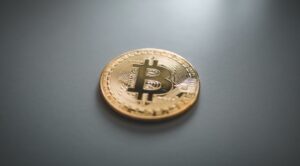
In a move that epitomizes the convergence of cutting-edge technology and daily convenience, Tencent, the Shenzhen-based tech giant, has introduced a revolutionary palm scanning service in China. The biometric system, known as Weixin Palm Payment, is not merely a futuristic concept but a tangible reality transforming the way users engage in daily activities, from accessing public transportation to entering corporate premises. As Tencent endeavors to make palm payments a mainstream phenomenon, the financial services industry watches closely, contemplating the potential impact on the global biometric payments market.
Palm Payments: A Futuristic Leap for Convenience
Tencent's Weixin Palm Payment, launched in May for Weixin Pay users, stands as a testament to the company's commitment to innovation. This contactless biometric system allows users to forego traditional essentials such as house keys, wallets, or smartphones. By simply hovering their hands over a sensor, users can seamlessly identify themselves through infrared cameras capturing unique palm prints and vein patterns. The technology, though not entirely novel, represents a significant step towards mainstream adoption, challenging the status quo of conventional payment methods.
Tencent's Ambitious Vision
Tencent, renowned for its ubiquitous WeChat platform, envisions Weixin Palm Payment as an integral part of daily life. Guo Rizen, Vice General Manager of Tencent's Weixin Pay Industry Application unit, expresses the company's ambition to alleviate the burden of carrying physical items. Whether boarding a subway or enjoying a workout at the gym, Tencent aims to integrate palm payments into diverse scenarios, offering unparalleled convenience to users.
Market Potential and Global Biometric Payments Forecast
The global biometric payments market is poised for explosive growth, with estimates projecting over 3 billion users and nearly $5.8 trillion in value by 2026. Tencent's foray into palm payments aligns with this trajectory, as the company seeks to capitalize on the rising demand for secure and efficient payment solutions. The contactless nature of palm scanning distinguishes it from traditional methods, presenting an attractive proposition for consumers and businesses alike.
Security and Privacy Considerations
While the adoption of biometric technology brings forth unparalleled convenience, experts caution against overlooking privacy and security concerns. Edward Santow, Industry Professor of Responsible Technology at the University of Technology Sydney, emphasizes the need for vigilant safeguards. The collection of biometric data, though stored securely on the cloud and encrypted by Tencent, raises legitimate apprehensions about potential misuse and cyber threats.
Tencent's Assurance on Security and User Control
In response to privacy concerns, Tencent underscores its commitment to security and privacy. The biometric data collected through palm scanning is stored on the cloud and encrypted, assuring users that their information is safeguarded. Guo emphasizes that participation in the scanning service is strictly voluntary, with users retaining control over spending limits for authorized payments. Tencent's proactive stance on user control and security aims to address apprehensions and build trust in the adoption of this transformative technology.
User Perspectives and the Path Forward
As Tencent tests the waters with Weixin Palm Payment, user perspectives become crucial in shaping the future trajectory. Initial responses from users like Kate Xue, who embrace the inevitability of technological changes, provide valuable insights. While concerns about data security persist, acceptance of AI and technological advancements suggests a willingness among users to redefine the boundaries of convenience and accessibility.
Future Trajectory of Biometric Payments
As Tencent pioneers the integration of palm scanning technology into daily transactions, the trajectory of the biometric payments industry appears poised for a transformative journey. With estimates forecasting over 3 billion users and a market value of nearly $5.8 trillion by 2026, it is conceivable that biometric payment methods, including palm scanning, will become increasingly ubiquitous.
The seamless and secure nature of biometric authentication aligns with the growing consumer demand for convenient yet robust payment solutions. Looking ahead, advancements in biometric technology may extend beyond palm scanning to encompass a spectrum of modalities, such as facial recognition and voice authentication, further diversifying the landscape of secure transactions.
Implications for Traditional Payment Methods
The rise of biometric payments introduces intriguing implications for traditional payment methods, particularly debit cards. As consumers experience the convenience and enhanced security offered by biometric authentication, the appeal of physical cards may wane. The potential substitution effect could pose a challenge to the traditional debit card industry, prompting financial institutions to adapt and innovate. Furthermore, the contactless and hygienic nature of biometric transactions, accentuated by the current germ-conscious environment, may accelerate the shift away from physical cards. While debit cards are unlikely to face outright obsolescence, the industry may witness a recalibration as consumers increasingly embrace the futuristic allure of palm payments and similar biometric innovations. The onus is now on financial institutions to navigate this evolving landscape, ensuring the coexistence and synergy of traditional and cutting-edge payment methods in the pursuit of providing diverse and secure choices for consumers.
Conclusion
Tencent's Weixin Palm Payment will undergo further scrutiny and feedback evaluation to determine its potential for large-scale implementation. As the financial services industry navigates the intersection of technology and payments, Tencent's bold venture into palm payments serves as a compelling case study, prompting reflection on the evolving landscape of secure and seamless transactions.
In a move that epitomizes the convergence of cutting-edge technology and daily convenience, Tencent, the Shenzhen-based tech giant, has introduced a revolutionary palm scanning service in China. The biometric system, known as Weixin Palm Payment, is not merely a futuristic concept but a tangible reality transforming the way users engage in daily activities, from accessing public transportation to entering corporate premises. As Tencent endeavors to make palm payments a mainstream phenomenon, the financial services industry watches closely, contemplating the potential impact on the global biometric payments market.
Palm Payments: A Futuristic Leap for Convenience
Tencent's Weixin Palm Payment, launched in May for Weixin Pay users, stands as a testament to the company's commitment to innovation. This contactless biometric system allows users to forego traditional essentials such as house keys, wallets, or smartphones. By simply hovering their hands over a sensor, users can seamlessly identify themselves through infrared cameras capturing unique palm prints and vein patterns. The technology, though not entirely novel, represents a significant step towards mainstream adoption, challenging the status quo of conventional payment methods.
Tencent's Ambitious Vision
Tencent, renowned for its ubiquitous WeChat platform, envisions Weixin Palm Payment as an integral part of daily life. Guo Rizen, Vice General Manager of Tencent's Weixin Pay Industry Application unit, expresses the company's ambition to alleviate the burden of carrying physical items. Whether boarding a subway or enjoying a workout at the gym, Tencent aims to integrate palm payments into diverse scenarios, offering unparalleled convenience to users.
Market Potential and Global Biometric Payments Forecast
The global biometric payments market is poised for explosive growth, with estimates projecting over 3 billion users and nearly $5.8 trillion in value by 2026. Tencent's foray into palm payments aligns with this trajectory, as the company seeks to capitalize on the rising demand for secure and efficient payment solutions. The contactless nature of palm scanning distinguishes it from traditional methods, presenting an attractive proposition for consumers and businesses alike.
Security and Privacy Considerations
While the adoption of biometric technology brings forth unparalleled convenience, experts caution against overlooking privacy and security concerns. Edward Santow, Industry Professor of Responsible Technology at the University of Technology Sydney, emphasizes the need for vigilant safeguards. The collection of biometric data, though stored securely on the cloud and encrypted by Tencent, raises legitimate apprehensions about potential misuse and cyber threats.
Tencent's Assurance on Security and User Control
In response to privacy concerns, Tencent underscores its commitment to security and privacy. The biometric data collected through palm scanning is stored on the cloud and encrypted, assuring users that their information is safeguarded. Guo emphasizes that participation in the scanning service is strictly voluntary, with users retaining control over spending limits for authorized payments. Tencent's proactive stance on user control and security aims to address apprehensions and build trust in the adoption of this transformative technology.
User Perspectives and the Path Forward
As Tencent tests the waters with Weixin Palm Payment, user perspectives become crucial in shaping the future trajectory. Initial responses from users like Kate Xue, who embrace the inevitability of technological changes, provide valuable insights. While concerns about data security persist, acceptance of AI and technological advancements suggests a willingness among users to redefine the boundaries of convenience and accessibility.
Future Trajectory of Biometric Payments
As Tencent pioneers the integration of palm scanning technology into daily transactions, the trajectory of the biometric payments industry appears poised for a transformative journey. With estimates forecasting over 3 billion users and a market value of nearly $5.8 trillion by 2026, it is conceivable that biometric payment methods, including palm scanning, will become increasingly ubiquitous.
The seamless and secure nature of biometric authentication aligns with the growing consumer demand for convenient yet robust payment solutions. Looking ahead, advancements in biometric technology may extend beyond palm scanning to encompass a spectrum of modalities, such as facial recognition and voice authentication, further diversifying the landscape of secure transactions.
Implications for Traditional Payment Methods
The rise of biometric payments introduces intriguing implications for traditional payment methods, particularly debit cards. As consumers experience the convenience and enhanced security offered by biometric authentication, the appeal of physical cards may wane. The potential substitution effect could pose a challenge to the traditional debit card industry, prompting financial institutions to adapt and innovate. Furthermore, the contactless and hygienic nature of biometric transactions, accentuated by the current germ-conscious environment, may accelerate the shift away from physical cards. While debit cards are unlikely to face outright obsolescence, the industry may witness a recalibration as consumers increasingly embrace the futuristic allure of palm payments and similar biometric innovations. The onus is now on financial institutions to navigate this evolving landscape, ensuring the coexistence and synergy of traditional and cutting-edge payment methods in the pursuit of providing diverse and secure choices for consumers.
Conclusion
Tencent's Weixin Palm Payment will undergo further scrutiny and feedback evaluation to determine its potential for large-scale implementation. As the financial services industry navigates the intersection of technology and payments, Tencent's bold venture into palm payments serves as a compelling case study, prompting reflection on the evolving landscape of secure and seamless transactions.
- SEO Powered Content & PR Distribution. Get Amplified Today.
- PlatoData.Network Vertical Generative Ai. Empower Yourself. Access Here.
- PlatoAiStream. Web3 Intelligence. Knowledge Amplified. Access Here.
- PlatoESG. Carbon, CleanTech, Energy, Environment, Solar, Waste Management. Access Here.
- PlatoHealth. Biotech and Clinical Trials Intelligence. Access Here.
- Source: https://www.financemagnates.com//fintech/payments/beyond-touch-tencents-palm-payments-reshaping-the-payment-paradigm/
- :has
- :is
- :not
- 130
- 2026
- 8
- a
- About
- accelerate
- acceptance
- accessibility
- accessing
- activities
- adapt
- address
- Adoption
- advancements
- against
- ahead
- AI
- aims
- Aligns
- alike
- alleviate
- allows
- allure
- ambition
- ambitious
- among
- an
- and
- appeal
- appears
- Application
- ARE
- AS
- assurance
- At
- attractive
- Authentication
- authorized
- away
- banner
- become
- Beyond
- Billion
- biometric
- boarding
- bold
- boundaries
- Brings
- build
- build trust
- burden
- businesses
- but
- by
- cameras
- CAN
- capitalize
- Capturing
- card
- card industry
- Cards
- carrying
- case
- caution
- challenge
- challenging
- Changes
- China
- choices
- closely
- Cloud
- CNN
- collection
- commitment
- company
- compelling
- concept
- Concerns
- consumer
- Consumers
- Contactless
- control
- convenience
- Convenient
- conventional
- Convergence
- Corporate
- could
- crucial
- Current
- cutting-edge
- cyber
- daily
- daily transactions
- data
- data security
- Debit
- Debit Card
- Debit Cards
- Demand
- Determine
- distinguishes
- diverse
- Edward
- effect
- efficient
- embrace
- emphasizes
- encompass
- encrypted
- endeavors
- engage
- enhanced
- enjoying
- ensuring
- entering
- entirely
- Environment
- envisions
- essentials
- estimates
- evaluation
- evolving
- experience
- experts
- expresses
- extend
- Face
- facial
- facial recognition
- feedback
- financial
- Financial institutions
- financial services
- For
- For Consumers
- Foray
- forth
- from
- further
- Furthermore
- future
- futuristic
- General
- giant
- Global
- Growing
- Growth
- gym
- Hands
- House
- HTML
- HTTPS
- identify
- Impact
- implementation
- implications
- in
- Including
- increasingly
- industry
- information
- initial
- innovate
- Innovation
- insights
- institutions
- integral
- integrate
- integration
- intersection
- into
- intriguing
- introduced
- Introduces
- IT
- items
- ITS
- journey
- jpg
- keys
- known
- landscape
- large-scale
- launched
- Leap
- legitimate
- Life
- like
- limits
- looking
- Mainstream
- mainstream adoption
- make
- manager
- Market
- market value
- May..
- merely
- methods
- misuse
- modalities
- move
- Nature
- Navigate
- navigates
- nearly
- Need
- novel
- now
- of
- offered
- offering
- on
- onus
- or
- outright
- over
- palm
- paradigm
- part
- participation
- particularly
- path
- patterns
- Pay
- payment
- payment methods
- payments
- payments industry
- perspectives
- phenomenon
- physical
- pioneers
- platform
- plato
- Plato Data Intelligence
- PlatoData
- poised
- potential
- prints
- privacy
- Privacy and Security
- Proactive
- Professor
- proposition
- provide
- providing
- public
- pursuit
- raises
- Reality
- recognition
- redefine
- reflection
- Renowned
- represents
- reshaping
- response
- responses
- responsible
- retaining
- revolutionary
- Rise
- rising
- robust
- s
- safeguarded
- safeguards
- scanning
- scenarios
- scrutiny
- seamless
- seamlessly
- secure
- securely
- security
- Seeks
- sensor
- serves
- service
- Services
- shaping
- shift
- significant
- similar
- simply
- smartphones
- Solutions
- Spectrum
- Spending
- stance
- stands
- Status
- Step
- stored
- Study
- such
- Suggests
- sydney
- synergy
- system
- tangible
- tech
- technological
- Technology
- Tencent
- testament
- tests
- that
- The
- The Future
- The Landscape
- their
- themselves
- this
- though?
- threats
- Through
- to
- touch
- towards
- traditional
- trajectory
- Transactions
- transformative
- transforming
- transportation
- Trillion
- Trust
- ubiquitous
- undergo
- underscores
- unique
- unit
- university
- unlikely
- unparalleled
- User
- users
- Valuable
- value
- venture
- vice
- Voice
- voluntary
- Wallets
- watches
- Waters
- Way..
- whether
- while
- WHO
- will
- Willingness
- with
- witness
- workout
- yet
- zephyrnet









